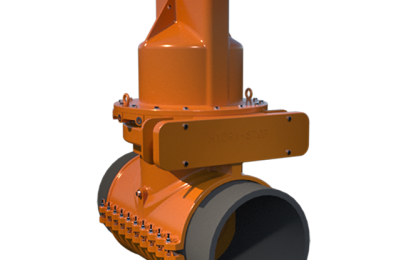There are multiple reasons why a water main can break, but the result is always the same — disaster. Whether you’re a contractor, utility or municipality, the cleanup and potential liability issues that accompany a water main break are just two of the headaches you’d rather avoid.
Rather than wait until streets are flooded, it’s important to understand why water main failures can occur and how to prevent them. If it’s too late, you’ll have to take the necessary steps to stop the deluge and get the site back to normal again. With that in mind, here are some key facts about water main breaks.
Why Water Mains Break
- Temperature. Metal and other materials expand and contract as conditions become warmer and colder. Over time, the stress that puts on the materials makes them more susceptible to breakage.
- Excavation work. Mains often crisscross each other and can be stacked on top of one another beneath the streets. This means utility work or road work can result in equipment hitting a pipe and bursting it.
- Materials. For many years before the 1970s, cast iron was the preferred choice for water mains. However, cast iron pipes are more likely to wear down and become brittle over time.
- Age. Simply put, the older something is, the more likely it is to fail. That’s typically true regardless of the material or how well it was constructed.
- Pressure changes. Extreme pressure drops or surges put unwanted strain on the water system.
Preventing Water Main Breaks
There are several steps to take to reduce the risk of a water main breaking. These include:
- Monitor pressure changes. Equipment that monitors pressure and assesses pipeline distribution systems can provide real-time data about the system’s performance.
- Control soil erosion. In some locations, water mains may be exposed to the elements if soil erosion occurs. This could increase the chances of a break.
- Use extra caution when digging. Excavation is necessary for many types of projects. Determining ahead of time where risks may lie is every bit as necessary.
What to Do in the Event of a Break
When a water main breaks for any reason, it can be a nightmare for your operation and any residents who live nearby. Here are the key steps to take when a water main break occurs:
- Shut off the water. Water systems typically include a series of valves that can be closed to prevent further flooding.
- Determine the specific location of the break. Gushing water or wet soil are obvious signs, but that could just be the site where water is flowing because there’s less resistance. The actual break in the water main could be somewhere else along the pipeline.
- Make the necessary repairs. This task must be left to trained professionals.
- Clean up. Again, this is best left to professionals. The prevention of mold and other hazardous issues is a priority, and environmental regulators might have to inspect the cleanup work.
A broken main is never a good scenario. However, using these tips and modern equipment and technology can help prevent these incidents.





